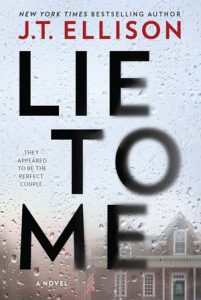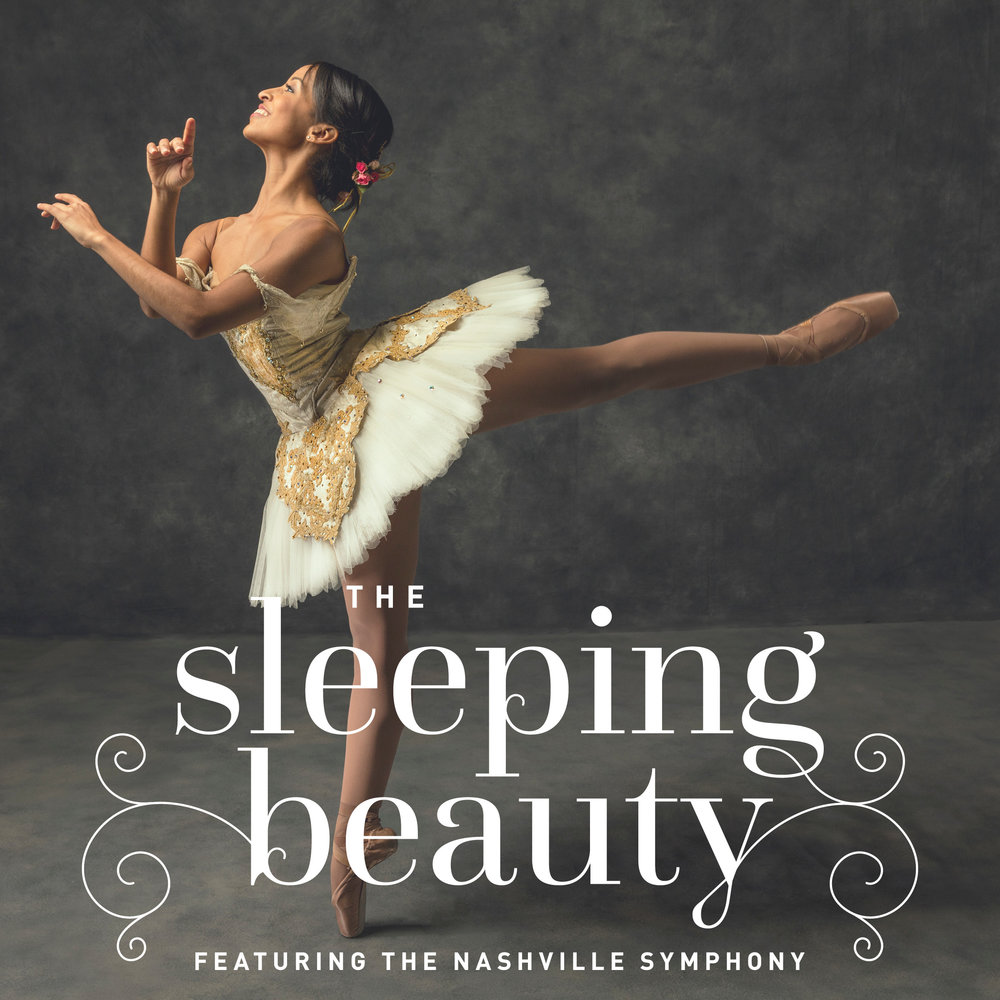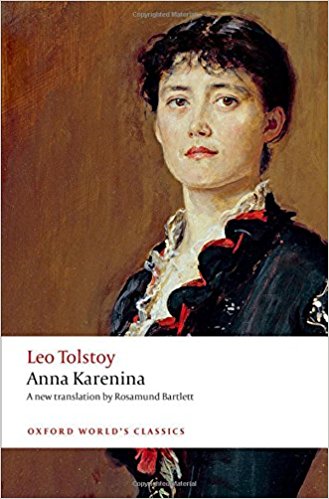August departs in a dreadful deluge. But September arrives – I hope, I believe – with hope and hustle, even in times such as these. September strides in with energy and eagerness, industry and effort. Today’s post features one book, two readings, and three performances perfect for this month – plus tremendous gratitude for a home that is safe and dry and those who help and shelter others in need.
ONE BOOK:
Bill Browder’s Red Notice takes you into the eye of the darkening storm that is Russia today. It’s a high octane memoir that reads like thriller – late night escapes, murder, mayhem, and finally some measure of justice. Browder is a man on a mission in this book. Having made his fortune in Russia as a hedge fund manager, he got on the wrong side of Putin and barely made it out of the country. His lawyer and friend – Sergei Magnitsky – did not. Red Notice is a hard charging diatribe against Putin and his government and an accounting of how Browder became an unlikely human rights activist, intent on settling scores.
Browder grew up in a family of left-leaning academics including a famous grandfather, head of the Communist Party in America in the 1930s. Browder himself became the black sheep of the family, rebelling the best way he knew how: by going to Stanford business school. He had an interest in Russia because of family history there, and he wanted to figure out how to make money in that part of the world. Red Notice, initially, takes you on an exhilirating ride with him through Bain & Company, the Boston Consulting Group, Salomon Brothers, Eastern Europe, Russia, and the the world of high finance in the late 90s and early 2000’s. You find yourself cheering for Browder in the first half of the book as he carefully – and joyfully! – explains how he made his fortune.
Things take a serious turn in the second half of the book. Browder initially profited by exposing corruption among Russian oligarchs, and that was just fine with Putin. When Putin’s alliance with the oligarchs became a closer one – after they began cutting him in on their massive theft of formerly state-owned assets – Browder’s techniques brought him and anyone who worked for him under close scrutiny. Raids led to arrests, and escapes were made under cover of night. Browder himself was detained and then banned from reentering the country in 2005. He begged the last of his Russian lawyers to leave the country, but the 37-year-old Sergei Magnitsky would not.
“The law will protect me. This isn’t 1937,” Sergei said, referring to Stalin’s purges.
18 months later, Magnitsky was dead, after a year of torture in Russian prisons. He refused to provide false testimony against Browder and others.
The last part of the book details Browder’s dogged quest to seek some measure of justice for his friend. In Russia, those who had tortured Magnitsky and stolen state assets were rewarded; 0bviously, there was no hope for punishment there. In the U.S., Browder was able to garner Congressional support for passage of the Magnitsky Act in 2012, which provided that anyone involved in the false arrest, torture, or death of Sergei Magitsky would be publicly named and banned from entering the US, and their US assets would be frozen. Russia’s response was robust to say the least, cutting off all further American adoptions of Russian orphans. Putin also put out a “Red Notice” for Browder, an international arrest warrant. Interpol rejected the notice, an incredibly rare event for the international agency. Browder was tried in absentia in Russia and found guilty of all kinds of crimes, as was Magnitsky – posthumously.
Red Notice – not a short book, at about 400 pages – moves along quickly and offers a compelling account of what’s happening inside a country that seems especially relevant to our own right now. It reveals Russia’s turn away from the rule of law – admittedly, a brief period during the 1980s – back to the rule of man. Vladimir Putin seems more dangerous to me than the day before I read the book, and the world seems a more dangerous place.
And yet: the bravery of Sergei Magnitsky and Bill Browder inspire. Neither of them backed down when confronted with overwhelming state force, and the one who lived to tell the tale has spread the truth far and wide.
Browder’s memoir conveys every bit of the drivenness that must have contributed to his tremendous success in finance. This generally makes for excellent, action-driven reading, but occasionally you get the feeling that Browder isn’t the sort of person to lose sleep overthinking things. He doesn’t seem particularly introspective. But you don’t read Red Notice for the Deep Thoughts or aesthetic sensibility. You read it to learn about how Russia operates, at the highest levels – and what happens to those who are in the way.
Another reason to read it? In Browder’s words:
I have to assume that there is a very real chance that Putin or members of his regime will have me killed someday. Like anyone else, I have no death wish and I have no intention of letting them kill me. I can’t mention most of the countermeasures I take, but I will mention one: this book. If I’m killed, you will know who did it. When my enemies read this book, they will know that you know. So if you sympathize with this search for justice, or with Sergei’s tragic fate, please share this story with as many people as you can. That simple act will keep the spirit of Sergei Magnitsky alive and go further than any army of bodyguards in keeping me safe.
Some other reasons, in the words of other readers who enjoyed it:
“Bill Browder’s autobiography is bracing, direct and honest… It is both a political thriller and an argument for morality in foreign policy that he could never have expected to make when he began his roaring career in finance.” – The Daily Beast
“Reads like a classic thriller, with an everyman hero alone and in danger in a hostile foreign city… but it’s all true, and it’s a story that needs to be told.” – Lee Child, bestselling author of the Jack Reacher novels
Browder recently testified (in July 2017) before the Senate Judiciary Committee about Putin’s government. The Russian lawyer who met with Donald Trump Jr. has admitted that she wanted to discuss the Magnitsky Act. Browder has said that Russia “wouldn’t have gone in [to the meeting] without being prepared to offer something in return” for help repealing it. See NPR piece here.
In a late-breaking development, the Telegraph reported on August 24th that Moscow has issued a fresh request to Interpol for the arrest and extradition of Bill Browder – a brand new Red Notice! “The disclosure comes amid growing concern in Europe about the use of red notices by authoritarian leaders cracking down on their critics,” the Telegraph reports.
Browder flew from London to Washington D.C. without incident in order to testify, but here’s what happened the next time he tried to fly to the U.S.:
“Then on August 3 I was flying from London to Newark and was told by the Homeland Security representative at Heathrow that my ESTA [visa waiver] had been cancelled. After three hours with various phone calls back and forth the Department of Homeland Security in the US reinstated my ESTA.
“Contacts in Congress made enquiries with Homeland Security and said it had been cancelled due to a flag by foreign law enforcement.”
He added: “The continued efforts of Putin to abuse Interpol to retaliate against the campaign for Magnitsky sanctions shows how much these sanctions truly touch Putin’s Achilles heel – his offshore money.”
It’s safe to say that Browder has gotten under Putin’s skin. Thank you, Perian and Sam Strang, for bringing this book to my attention and allowing me to serve as witness. For more: check out this terrific article in Rolling Stone on “Russiagate and the Magnitsky Act, Linked Again” (thanks, Matt Osborne).
TWO READINGS:
J.T. Ellison at Parnassus Books
September 5, 2017 6:30 PM
No ticket required
 I haven’t read J.T. Ellison’s new novel, Lie to Me, yet, but it sounds intriguing:
I haven’t read J.T. Ellison’s new novel, Lie to Me, yet, but it sounds intriguing:
Domestic noir at its best… Grief, jealousy, betrayal and murder destroy the facade of the perfect literary couple.
Sutton and Ethan Montclair’s idyllic life is not as it appears. They seem made for each other, but the truth is ugly. Consumed by professional and personal betrayals and financial woes, the two both love and hate each other. As tensions mount, Sutton disappears, leaving behind a note saying not to look for her.
Ethan finds himself the target of vicious gossip as friends, family and the media speculate on what really happened to Sutton Montclair. As the police investigate, the lies the couple have been spinning for years quickly unravel. Is Ethan a killer?
And, from one of my favorite reviewers, Sean Kinch, at Chapter16.org:
Ellison, a Nashville resident, sets her novel in Franklin, and local readers will enjoy hunting for references to nearby landmarks (Gentry’s Farm!). They will also find grim references to local problems like traffic and skyrocketing real-estate prices. The deeper satisfactions of Lie To Me consist in Ellison’s portrayal of her characters’ irreducible contradictions: they hate their weaknesses but are powerless to change; they revile in others the traits they can’t expunge from themselves. Through Sutton, the most complex personality, Ellison reveals that, beneath the veneer of having it all, people can hide emotional lives of extraordinary pain.
Salon@615 | Jesmyn Ward
September 12, 2017 6:30 PM
Parnassus Books, 3900 Hillsboro Pike
No ticket required
I’m a big fan of Jesmyn Ward’s Salvage the Bones, which won the 2011 National Book Award. (I read it because my friend Elizabeth Hawkins’ son was starting at Vanderbilt and it was the freshman read!) Ward will discuss her new novel, Sing, Unburied, Sing, at Parnassus on September 12th.
Some early praise for the new book:
“From the opening pages of Sing, Unburied, Sing, you know you’re in for a unique experience among the pecan trees and dusty roads of rural Mississippi. This intricately layered story combines mystical elements with a brutal view of racial tensions in the modern-day American South…” – BookPage
“No reason to delay this spell-bound verdict: With Sing, Unburied, Sing, her third novel, Jesmyn Ward becomes the standard-bearer for contemporary Southern fiction, its fullest, most forceful, most vibrant, and most electrifying voice … While Ward, born and raised in a small coastal community near Pass Christian, Mississippi, is operating within the contours of the Southern literary tradition – in the swampy lilt of her prose, in the scope of her concerns, in the way she entangles setting and character – she is also expanding it, heaving it forward, and revitalizing it in ways that no writer has done in more than a decade.” – Garden & Gun
THREE SHOWS:
Nashville Repertory Theater presents Kate Hamill’s “Sense & Sensibility”
September 9 – 23, 2017
Johnson Theater, Tennessee Performing Arts Center
Kate Hamill’s adaptation of Jane Austen’s “Sense & Sensibility” has been widely acclaimed since its premiere in 2014, as in this The New York Times review of a production at the Bedlam Theater Company:
Pray do not be alarmed, gentle readers…
As adapted for the stage by Kate Hamill… “Sense & Sensibility” might be described as Jane Austen for those who don’t usually like Jane Austen, finding her work too reserved for lively entertainment. Yet I would imagine that even fanatical Janeites, as her most devoted admirers are known, will not take offense, once they get used to this production’s audaciously high energy level.
For while the Bedlam “Sense & Sensibility” may seem to take daring liberties with its source’s quiet sensibility, it never violates the original novel’s uncommon sense – of values, of society, of human frailties. Austen’s abiding themes emerge in heightened and often illuminating relief here.
Playwright (and actress) Kate Hamill seems both courageous and humble in this undertaking. From an interview with the Minnesota Post:
Minnesota Post: It’s such a sacred novel. Did you have to talk yourself into messing with Jane Austen?
Kate Hamill: I did! I had some trepidation about how I felt about it, and how other people felt about it. I expected people to come after me with pitchforks. I’m sure some people are not happy with it. But most of Shakespeare’s plays are adaptations. And if you’re going to make something your own and have a point of view, you have to summon up your courage and be brave.
I also told myself a lot, “It’s not like I’m destroying the novel. It’s not like all copies of this novel will be burned.” I do love Jane, and this is not competition for the novel…
MP: Do you think she’d be happy with your play?
KH: I hope so. Part of what I did in preparation was to read a lot of her letters. I really tried to get to know her, because I wanted that spirit to creep in. There are monologues the characters say as dinner conversation [in the play], and I whorled bits of her letters into some of those. She was such an irreverent, funny person, and she loved the theater so much, I feel like she would approve of an effort to not only give her her due, but also bring an additional point of view. I hope I don’t have to answer to her in the afterlife.
* * *
The Nashville Symphony Presents An Evening with John Williams
Featuring Music from Star Wars, E.T., Harry Potter & More
Saturday, September 9, 2017
Schermerhorn Symphony Center
It’s a big deal that John Williams is coming to Nashville. Just to remind you what an enormous figure he is (from the Radio Times):
Any mention of John Williams, the world’s most hummable living film composer, deserves a fanfare. But which one to choose?
 The imperious opener from the first chapter of Star Wars, whose massed trumpets deliberately recall a saluted entrance to the Roman Colosseum? The lively reveille of Raiders of the Lost Ark, one of action cinema’s great calls to arms?
The imperious opener from the first chapter of Star Wars, whose massed trumpets deliberately recall a saluted entrance to the Roman Colosseum? The lively reveille of Raiders of the Lost Ark, one of action cinema’s great calls to arms?
What about the slow-building theme from Jurassic Park, told in strings rather than brass, its sense of wonder so infectious it has you craning your neck upwards as if surveying a 30ft-tall brachiosaurus? John Williams, 85 this year and still performing and composing at the top of his game, has literally created his own accompaniment.
There’s a handful of veteran film composers for whom age is no barrier… But John Williams, native New Yorker and longtime denizen of Los Angeles, remains unimpeachable as the people’s choice. His greatest hits are cornerstones of modern cinema. He’s the Paul McCartney of symphonic orchestral music.
FIRST-EVER NASHVILLE APPEARANCE – The program opens with Maestro Giancarlo Guerrero conducting Williams’ concerto for orchestra and bassoon entitled The Five Sacred Trees, featuring principal bassoonist Julia Harguindey. The second half will feature John Williams conducting the orchestra as they perform highlights from some of his more than 100 film scores.
This concert is a benefit for the Nashville Symphony’s education and community engagement programs, including Accelerando, which provides training and resources to young musicians from diverse ethnic communities. A portion of each ticket is a tax-deductible contribution.
BREAKING NEWS: This show is sold out, DARN. You can tune in to the radio broadcast – or check out another fantastic offering at the Symphony coming down the pike. Great seats are available for the show below – they just went on sale yesterday!
It’s a Night of Comedy & Classical with Your Nashville Symphony
Igudesman & Joo in BIG Nightmare Music
October 12, 2017, at 7:30 pm
Tickets from $25 & Subscriber Tickets from $21
ONE NIGHT ONLY — FIRST TIME IN NASHVILLE. They’ve conquered London, Paris, Vienna, Berlin, Tokyo, New York, L.A., Toronto, Chicago & Pittsburgh to name a few. They’ve garnered over 35 million hits on YouTube. NOW they take on Music City.
Big Nightmare Music features the talented, charismatic and hilarious duo Igudesman and Joo in an unforgettable display of classical music featuring your Nashville Symphony. Igudesman and Joo’s dream is to make classical music accessible to everyone, so bring your friends and family.
Musical Selections Will Include:
Mozart Bond
Alla Molto Turca
A Very Blue Danube
Cleaning vs. Riverdancing
With music by Beethoven, Bach, Rachmaninoff, Strauss, Vivaldi & more
* * *
Finally, an interview with Nashville Ballet Artistic Director and CEO Paul Vasterling, to conclude today’s September Special…
Nashville Ballet presents “The Sleeping Beauty”
September 23-24, 2017
TPAC’S Jackson Hall
Choreography after Marius Petipa
Adaption and Additional Choreography by Nashville Ballet Artistic Director & CEO Paul Vasterling
Music by Pyotr Ilyich Tchaikovsky
Live Music Performed by the Nashville Symphony
Bacon Interview with Paul Vasterling:
 Hi Paul! Thank you so much for stopping in at Bacon today to talk about your season opener – a season that ranges widely from the haunting, bloody Lizzie Borden through the joyful Nutcracker, from the Holocaust & Humanity Project to the Modern Masters and beyond. But for today – it’s all about enchantment. “The Sleeping Beauty,” premiering in 1890 in St. Petersburg, is considered perhaps the greatest of the classical ballets. Why?
Hi Paul! Thank you so much for stopping in at Bacon today to talk about your season opener – a season that ranges widely from the haunting, bloody Lizzie Borden through the joyful Nutcracker, from the Holocaust & Humanity Project to the Modern Masters and beyond. But for today – it’s all about enchantment. “The Sleeping Beauty,” premiering in 1890 in St. Petersburg, is considered perhaps the greatest of the classical ballets. Why?
The ballet set (and still) sets the standard for classical dancing in the “academic” style. That is, it uses the purest steps, movements and gestures, those that we might see in the ballet classroom, to tell a story and to express ideas. The ballet is a unique challenge for a company and its ballerina to do well and it remains a standard to which a company aspires.
It is a great work because the incredible score by Tchaikovsky combined with the original choreography by Marius Petipa is a perfect mix of form and emotion – a true work of genius. Like Shakespeare or Mozart, in which human emotion is expressed via a formal structure (iambic pentameter or sonata form, for example), Tchaikovsky and Petipa take us on a human journey told through strict form; the results are sublime.
Today, some might consider “The Sleeping Beauty” a ballet primarily for children and their families to enjoy. The ballet was not, of course, originally intended for children. It was the height of elite entertainment for the Russian aristocracy, who were themselves looking towards France. In today’s world, what enchantment does “The Sleeping Beauty” hold for adults?
Although the ballet can be enjoyed as a lovely version of the familiar fairy tale, it has much more historic and aesthetic depth that can intrigue adults!
The work is actually quite sophisticated musically, choreographically and in production design. It also has a very interesting historical significance. The original creator of the libretto (like a kind of script that outlines the action of the ballet), Ivan Vsevolozhky, along with Petipa and Tchaikovsky, were endeavoring to make a tribute the Tsar Nicholas and his monarchy by harkening back to the era of the Louis XIV. Classical aesthetics (infinite lines, symmetry, harmony, a striving to conquer gravity and reach toward heaven) are emphasized in both decor and choreography; the spectacle of the processions and were made to present an idealized and utterly beautiful vision and tribute to the Russian court. Tchaikovsky used the Wagnerian device of leitmotif (a short recurring musical phrase associated with a character, place or idea) very successfully here: each of the main characters The Lilac Fairy (good), Carabosse (evil) and Princess Aurora (awakening, or enlightenment) have their own musical theme, and Tchaikovsky develops, expands and interweaves these themes to great effect. Petipa was at the height of his choreographic powers and created dances that made full use of the newly advanced (by the Russian Court School of Ballet) pointe work. The steps in the ballet are still some of the most difficult around, you’ll notice that in many of the solos the women barely come down from their pointes. Most interesting to me is the irony that even though the work was ostensibly a propaganda tool for the value of absolute Russian monarchy, it has, over time, become a work of art about the awakening of new ideas and thought. Just as Louis XIV’s death opened the doors for the Enlightenment, “The Sleeping Beauty” represents a move toward humanistic betterment – a striving for an awakening to new ideals in art; it is arguably one of the works that inspired Diaghilev and his colleagues to the great 20th century innovations that changed ballet and dance forever.
Tchaikovsky’s brilliant and beautiful music for the finale (or “apotheosis”) reflects this idea beautifully: in the pomp and ceremony that ends the ballet is embedded a metaphoric sunrise – Aurora, the awakening, is enshrined for us.
In what ways have you changed the original music and/or choreography by Tchaikovsky and Marius Petipa?
The original ballet is 4 hours long and was presented in 4 parts: a prologue, Act 1, Act 2 and Act 3. I’ve modified it down to 3 parts (in which the Prologue and Act one are presented as Act 1 scenes 1 and 2). My task was to edit the score and (and choreography) so that it became a reasonable amount of time for 21st century audiences without diluting the original ideas and aesthetic. It was a daunting task – Tchaikovsky’s music is difficult to cut both because it’s so well constructed and because it’s so wonderfully good! Choreographically most of what you will see is Petipa, albeit Petipa that has been handed down and adjusted and changed over the past 100 plus years (a “pure” version of this choreography has been debated and written about for many years and would take much more space here…) hence it’s “after Petipa.” I have staged and choreographed the mise en scene (the crowd scenes, groups scenes) and created new choreography for the garland waltz in Act 1 and many of the divertissements in the last act, which I’d added back in – many productions had cut them over the years.
Nashville Ballet last performed “The Sleeping Beauty” in 2012. In what ways will this year’s performance be different?
We are using a completely different production this time, from Ballet West, and designed by South African Peter Cazalet. This production is much richer and elaborate in scope and scale than the Sleeping Beauty production we last used. The detail and decoration on the costumes is quite elaborate and beautiful and the color palettes much more saturated. Mr. Cazalet was a mentor to David Heuvel whose designs you might remember from Nashville Ballet’s lovely Swan Lake.
The choreography is essentially the same although I always tweak things to suit the individual dancers’ best facets; I’ve added a new divertissement “Beauty and the Beast” to the dances in the 3rd act. Most important, though, is the dancers of the company (most of who performed in 2012) have developed their technique and artistry to new levels during the ensuing years; their general overall accomplishment will allow audiences to enjoy the ballet in new ways.
Leo Tolstoy wrote Anna Karenina at the same time as Tchaikovsky and Pepita were working on “The Sleeping Beauty.” (Anna Karenina is on my mind because my friend Jennifer Taylor just finished reading it – and recommended it highly!) I wonder how these works might relate to each other, if at all. They perhaps speak very different kinds of truths, but they are certainly both rooted in the same time and place. They have both stood the test of time. Thoughts?
A great question, and one that could be a thesis somewhere! I’ll do my best to muse a little here.
Two very different ideas of women written during the same period of great change. One could hypothesize that these two characters, Anna and Aurora, are both saved by the love of a man, or Anna is at least striving, unsuccessfully, to save herself through marriage. They could be described as being defined by their relationship to the men in their lives. I think “The Sleeping Beauty” transcends this thought because Aurora is almost an abstract figure in the ballet. We don’t see her as a desperate person needing to be defined by that which is outside of her, but as a symbol of truth, beauty, harmony and a striving toward a better version of humanness. She becomes almost a super-woman at the end of the ballet, whereas Anna succumbs to society’s pressures, a realistic outcome considering the times. Perhaps then, Anna is the realistic and Aurora the idealistic?
That is a very interesting notion. I had never considered that Sleeping Beauty could represent an abstract ideal. I loved chatting with you, Paul – thank you so much for taking the time!
For more on “The Sleeping Beauty,” check out this New York Times piece here.
* * *
Nesting dolls: Available for purchase here.












You’re back with a bang! I had heard Browder interviewed on Katie Couric’s podcast, but your review makes me all the more eager to read his book. It’s hard to imagine how Magnitsky must have suffered in those last months of his life and how he held out with such courage. Thanks for sharing!
Hi Mary! I fear today’s post maybe got a little long – oh dear! (Wasn’t I just thinking about how I sometimes have a bit too much to say?!) Red Notice is a compelling read, for sure – I’ll be anxious to hear what you think! Xo
Wow, Jennifer! So many good things in this post. Nothing this good could be too long. I’m really looking forward to Ward’s Sing, Unburied, Sing and added Browder and Ellison to the TBR list. Thank you for letting me know about the Ballet’s Sleeping Beauty. It’s doubtful I’ll get any of my boys to go with me, so I’m recruiting some girlfriends!
You are so kind, Tracy. I am so glad you enjoyed today’s post, and I hope to see you at the Jesmyn Ward reading! Also – Your boys might enjoy the Lizzie Borden ballet!! xo
Red Notice was one of my favorite books last year. I couldn’t put it down! Loved your post and thank you for always sharing such great recommendations.